Moderate glucose control results in less negative nitrogen balances in medical intensive care unit patients: a randomized, controlled study
- PMID: 22480187
- PMCID: PMC3681385
- DOI: 10.1186/cc11299
Moderate glucose control results in less negative nitrogen balances in medical intensive care unit patients: a randomized, controlled study
Abstract
Introduction: Hyperglycemia and protein loss are common in critically ill patients. Insulin can be used to lower blood glucose and inhibit proteolysis. The impact of moderate insulin therapy on protein metabolism in critically ill patients has not been evaluated. We compared urinary nitrogen excretion, nitrogen balance, serum albumin concentrations, prealbumin concentrations, and clinical outcomes between patients receiving moderate insulin therapy (MIT) and conventional insulin therapy (CIT) in a medical ICU.
Methods: Patients were randomly divided into groups and treated with MIT (glucose target 120 to 140 mg/dl) or CIT (glucose target 180 to 200 mg/dl). Calories and protein intake were recorded each day. On days 3, 7 and 14, the 24-hour urinary nitrogen excretion, nitrogen balance, and serum albumin and prealbumin concentrations were measured. Clinical outcomes data were collected.
Results: A total of 112 medical ICU patients were included, with 55 patients randomized to the MIT group and 57 patients randomized to the CIT group. Patients treated with MIT showed a trend towards increased nitrogen balance (P = 0.070), significantly lower urinary nitrogen excretion (P = 0.027), and higher serum albumin (P = 0.047) and prealbumin (P = 0.001) concentrations than patients treated with CIT. The differences between the two groups were most significant on day 3, when all factors showed significant differences (P < 0.05).
Conclusions: Moderate glucose control results in less negative nitrogen balances in medical ICU patients. Differences are more significant in the early stages compared with the late stages of critical illness.
Trial registration: ClinicalTrial.Gov NCT 01227148.
Trial registration: ClinicalTrials.gov NCT01227148.
Figures
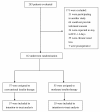
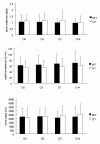
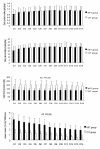

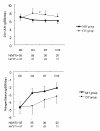
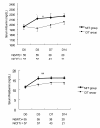
Comment in
-
Insulin therapy improves protein metabolism in the critically ill.Crit Care. 2012 May 14;16(3):125. doi: 10.1186/cc11313. Crit Care. 2012. PMID: 22587777 Free PMC article.
References
Publication types
MeSH terms
Substances
Associated data
LinkOut - more resources
Full Text Sources
Other Literature Sources
Medical
Research Materials

